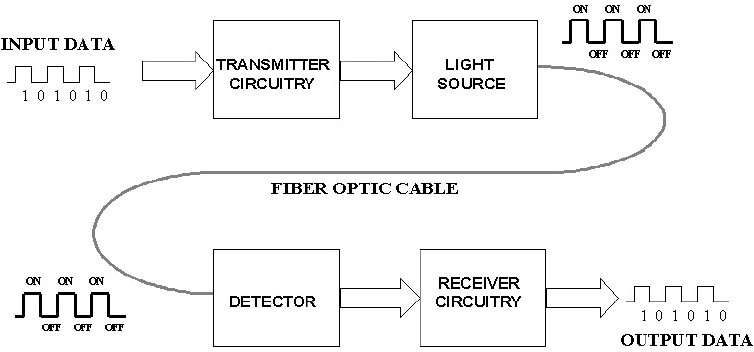- Related articles
- All Cisco AJ906A's information (Specs, Datasheet PDF)
- All Cisco DWDM-XENPAK-35.04's information (List price, Specs, Datasheet PDF, Compatibility
- All Cisco DWDM-X2-31.90's information (List price, Specs, Datasheet PDF, Compatibility mat
- All Cisco SFP-OC12-LR1's information (List price, Specs, Datasheet PDF, Compatibility matr
- The difference between GBIC and SFP
- All Cisco CWDM-SFP-1530's information (List price, Specs, Datasheet PDF, Compatibility mat
- Do You Really know About Fiber Optic Cable?
- All Cisco CWDM-SFP-1570's information (List price, Specs, Datasheet PDF, Compatibility mat
- Optical Transceivers for Cisco IE-3000-8TC-E Switch
- Used in 40GBASE-ER4 Standard Optical Transceiver Models

Introduction
The long the Fiber Optic Communication System, the far it can take the data or distribute the information. Therefore, it is very important to determine the longest Distance Fiber Optic Communication System. Many telecommunication companies prefer using the long fiber optic communication system so that they can effectively distribution the data in large areas.

Overview
Long-haul optics refers to the transmission of visible light signals over optical fiber cable for great distances, especially without or with minimal use of repeaters. Normally, repeaters are necessary at intervals in a length of fiber optic cable to keep the signal quality from deteriorating to the point of non-usability. In long-haul optical systems, the goal is to minimize the number of repeaters per unit distance, and ideally, to render repeaters unnecessary.
The main challenge facing developers of long-haul optics (and also the so-called ultra-long-haul or ULH optics) involves the loss inherent in the materials used in fiber optic cable. To some extent this loss can be overcome by increasing the brilliance of the optical signal at the input end, but this brute-force approach has limited practicality. Repeaters can be used to boost the signals at intervals along the transmission route, but this is costly, and the maintenance of such repeaters is difficult in underground or undersea fiber optic cable runs. This has resulted in a quest for the development of super-transparent substances that transmit energy at optical wavelengths with exceptionally low loss.
An indirect contributor to fiber optic cable loss is the fact that all transparent materials transmit energy at slightly different speeds, depending on the wavelength. This is the same effect that causes a prism to split white visible light into its constituent colors and takes place because the index of refraction is dependent on the wavelength. This is observed as a "smearing-out-over-time" effect in long fiber optic cable transmission, unless the energy for each signal can be kept within a narrow range of wavelengths. Engineers have developed schemes such as wave-division multiplexing (WDM) and dense wave-division multiplexing (DWDM) in an attempt to minimize this problem.
Conclusion
Today, the long distance fiber optic communication systems are being widely adopted in many telecommunication companies. The move is meant to distribute data to large areas more effectively. Consequently, distance should be one of the major factors to consider when choosing fiber optic communication system. Therefore, the longest fiber system is one which can spread information in the furthest areas as possible.





















































